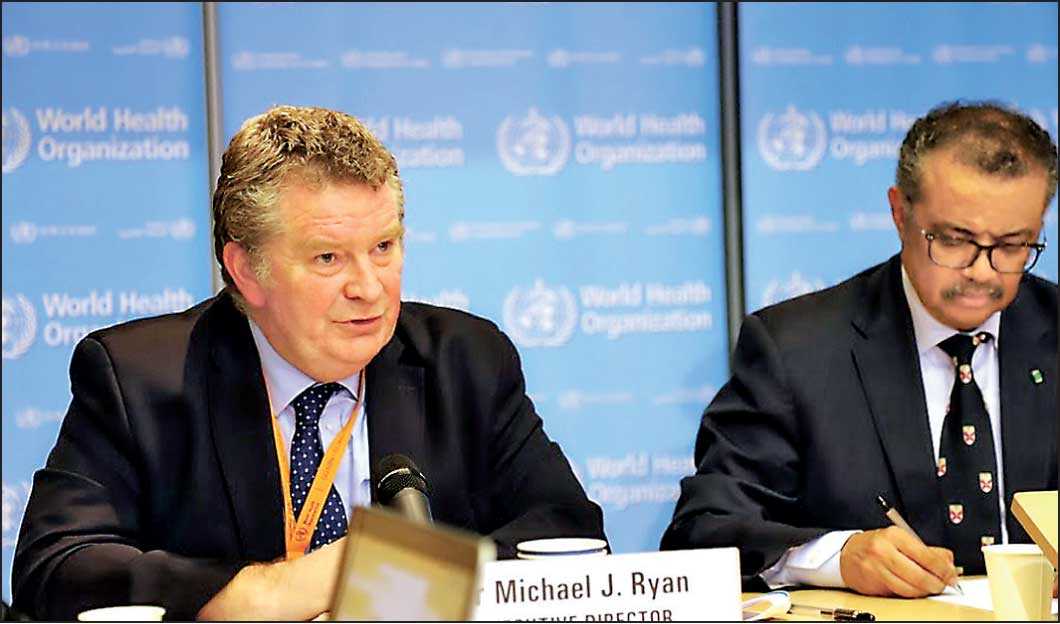Monday Apr 21, 2025
Monday Apr 21, 2025
Thursday, 6 August 2020 00:00 - - {{hitsCtrl.values.hits}}

World Health Organization (WHO) Health Emergencies Program executive director Dr. Michael Ryan (L) addresses a press conference in Geneva, Switzerland, 18 February (Photo by Chen Junxia/Xinhua)

Senior students study in a classroom with transparent boards placed on each desk to separate each other as a precautionary measure against the spread of COVID-19 at Wuhan No. 23 Middle School in Wuhan, central China’s Hubei Province, 6 May (Xinhua/Xiao Yijiu)
GENEVA (Xinhua): Although the first clusters of atypical pneumonia were reported in Wuhan, China, it doesn’t necessarily mean that is where the COVID-19 disease crossed from animals into humans, a senior World Health Organization (WHO) expert said on Monday.
WHO Health Emergencies Program executive director Dr. Michael Ryan said at a routine COVID-19 briefing on Monday that a much more “extensive retrospective epidemiological study” should be taken to fully understand the links between the cases.
He stressed the need to start studies on the first reported human clusters in order to systematically look for the “first signal at which the animal-human species barrier was crossed,” before moving to the studies on the animal side.
The WHO advance team that traveled to China in preparation for an international mission of identifying the zoonotic source of COVID-19 has concluded its mission recently, according to the WHO expert. Future studies will build on the initial investigations done by Chinese experts around the Wuhan seafood market.
Ryan also noted that WHO is moving forward with agreeing on the international team and ensuring that right expertise will be in place to work with the Chinese counterparts to design and implement further studies.
Discover Kapruka, the leading online shopping platform in Sri Lanka, where you can conveniently send Gifts and Flowers to your loved ones for any event including Valentine ’s Day. Explore a wide range of popular Shopping Categories on Kapruka, including Toys, Groceries, Electronics, Birthday Cakes, Fruits, Chocolates, Flower Bouquets, Clothing, Watches, Lingerie, Gift Sets and Jewellery. Also if you’re interested in selling with Kapruka, Partner Central by Kapruka is the best solution to start with. Moreover, through Kapruka Global Shop, you can also enjoy the convenience of purchasing products from renowned platforms like Amazon and eBay and have them delivered to Sri Lanka.
Discover Kapruka, the leading online shopping platform in Sri Lanka, where you can conveniently send Gifts and Flowers to your loved ones for any event including Valentine ’s Day. Explore a wide range of popular Shopping Categories on Kapruka, including Toys, Groceries, Electronics, Birthday Cakes, Fruits, Chocolates, Flower Bouquets, Clothing, Watches, Lingerie, Gift Sets and Jewellery. Also if you’re interested in selling with Kapruka, Partner Central by Kapruka is the best solution to start with. Moreover, through Kapruka Global Shop, you can also enjoy the convenience of purchasing products from renowned platforms like Amazon and eBay and have them delivered to Sri Lanka.